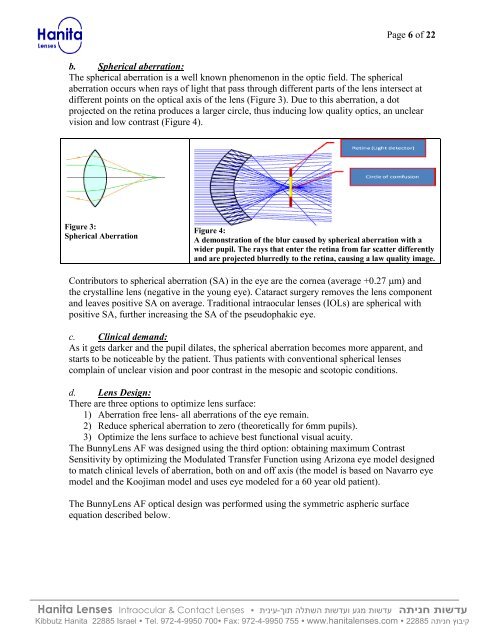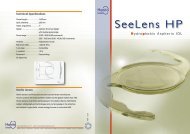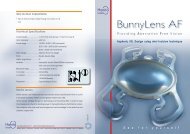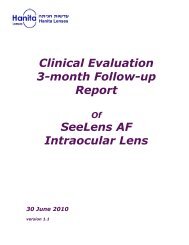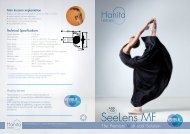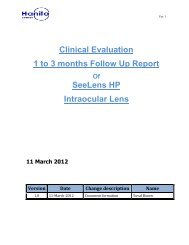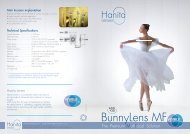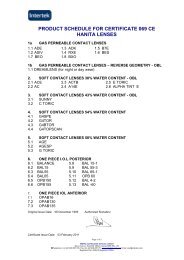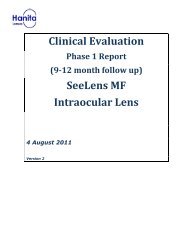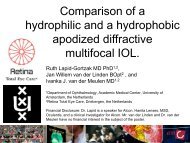BunnyLens AF - Hanita Lenses
BunnyLens AF - Hanita Lenses
BunnyLens AF - Hanita Lenses
- No tags were found...
Create successful ePaper yourself
Turn your PDF publications into a flip-book with our unique Google optimized e-Paper software.
Page 6 of 22b. Spherical aberration:The spherical aberration is a well known phenomenon in the optic field. The sphericalaberration occurs when rays of light that pass through different parts of the lens intersect atdifferent points on the optical axis of the lens (Figure 3). Due to this aberration, a dotprojected on the retina produces a larger circle, thus inducing low quality optics, an unclearvision and low contrast (Figure 4).Figure 3:Spherical AberrationFigure 4:A demonstration of the blur caused by spherical aberration with awider pupil. The rays that enter the retina from far scatter differentlyand are projected blurredly to the retina, causing a law quality image.Contributors to spherical aberration (SA) in the eye are the cornea (average +0.27 m) andthe crystalline lens (negative in the young eye). Cataract surgery removes the lens componentand leaves positive SA on average. Traditional intraocular lenses (IOLs) are spherical withpositive SA, further increasing the SA of the pseudophakic eye.c. Clinical demand:As it gets darker and the pupil dilates, the spherical aberration becomes more apparent, andstarts to be noticeable by the patient. Thus patients with conventional spherical lensescomplain of unclear vision and poor contrast in the mesopic and scotopic conditions.d. Lens Design:There are three options to optimize lens surface:1) Aberration free lens- all aberrations of the eye remain.2) Reduce spherical aberration to zero (theoretically for 6mm pupils).3) Optimize the lens surface to achieve best functional visual acuity.The <strong>BunnyLens</strong> <strong>AF</strong> was designed using the third option: obtaining maximum ContrastSensitivity by optimizing the Modulated Transfer Function using Arizona eye model designedto match clinical levels of aberration, both on and off axis (the model is based on Navarro eyemodel and the Koojiman model and uses eye modeled for a 60 year old patient).The <strong>BunnyLens</strong> <strong>AF</strong> optical design was performed using the symmetric aspheric surfaceequation described below.<strong>Hanita</strong> <strong>Lenses</strong> Intraocular & Contact <strong>Lenses</strong>עדשות חניתהעדשות מגע ועדשות השתלה תוך-עינית•קיבוץ חניתה • 88222 www.hanitalenses.com Kibbutz <strong>Hanita</strong> 22885 Israel • Tel. 972-4-9950 700• Fax: 972-4-9950 755 •


